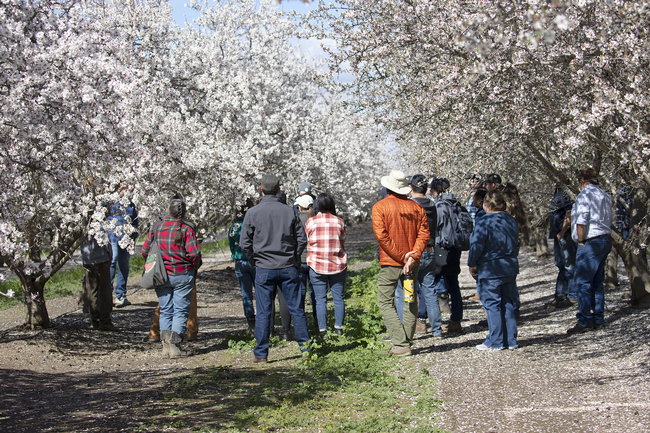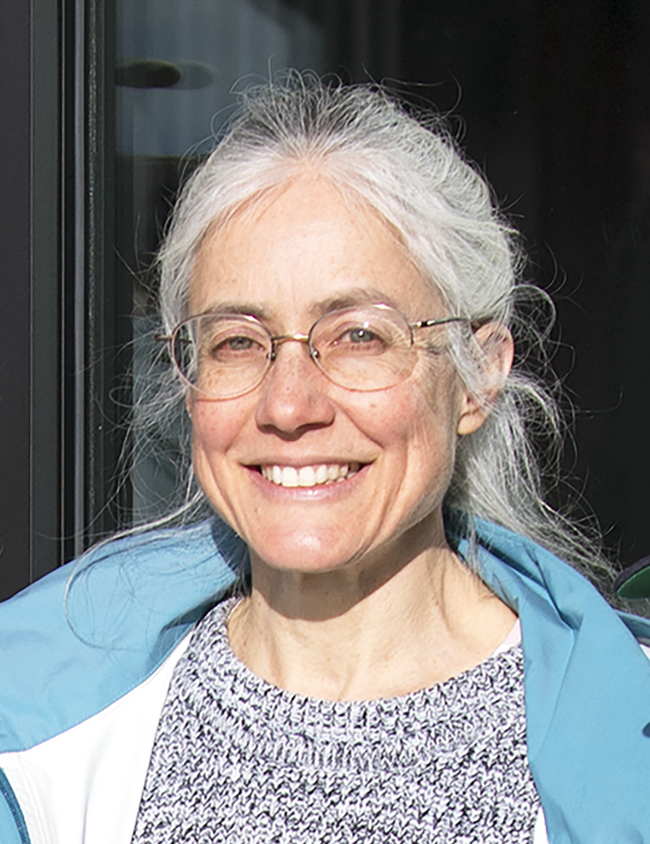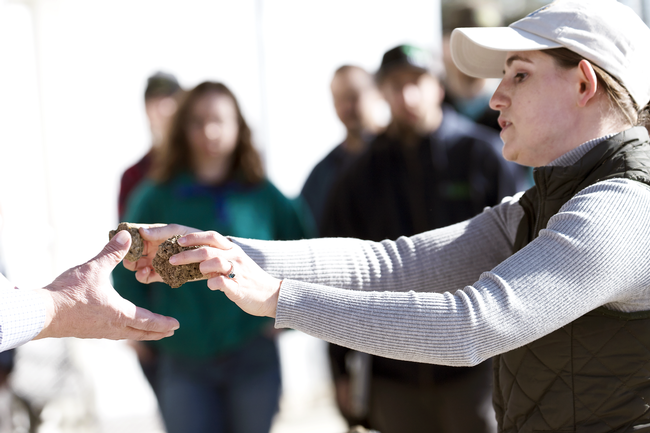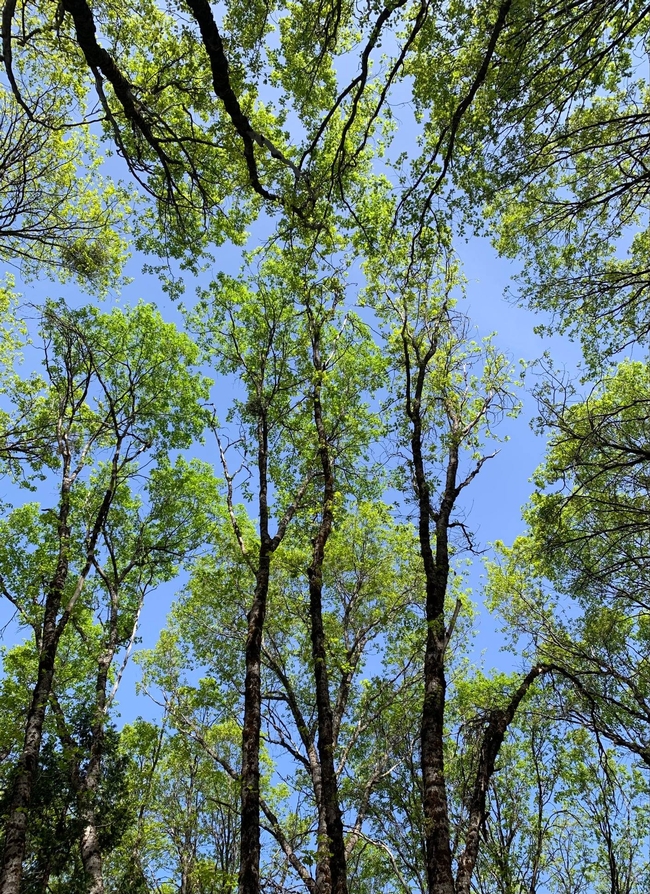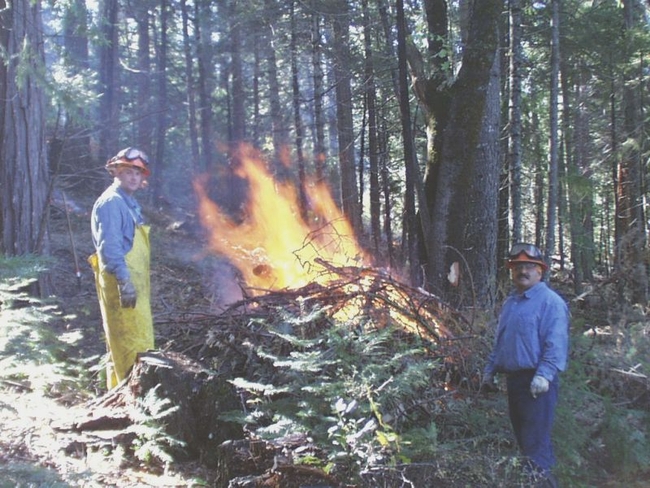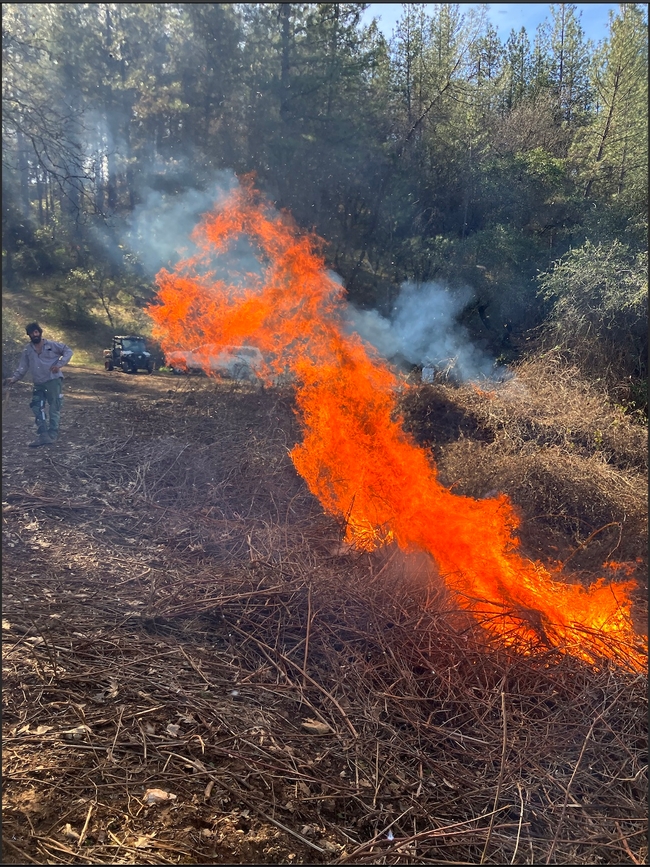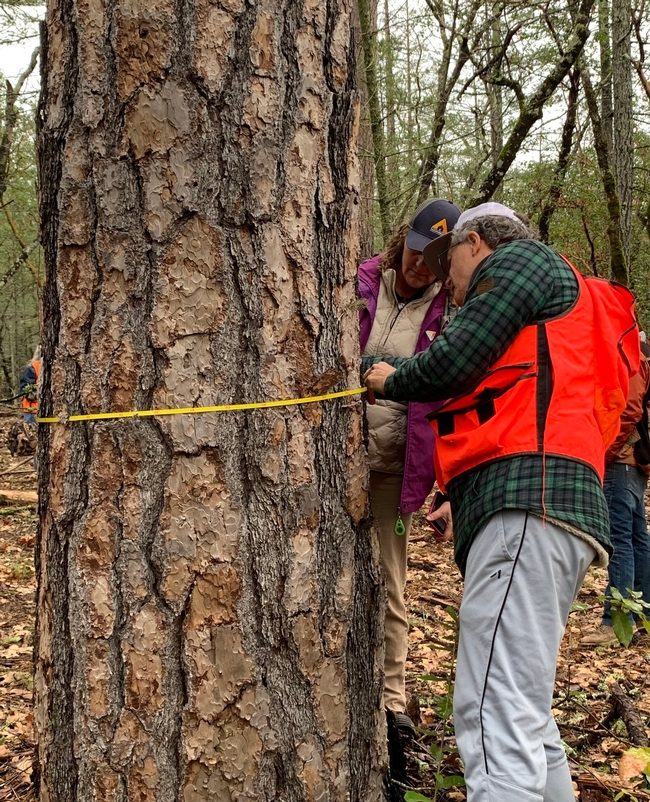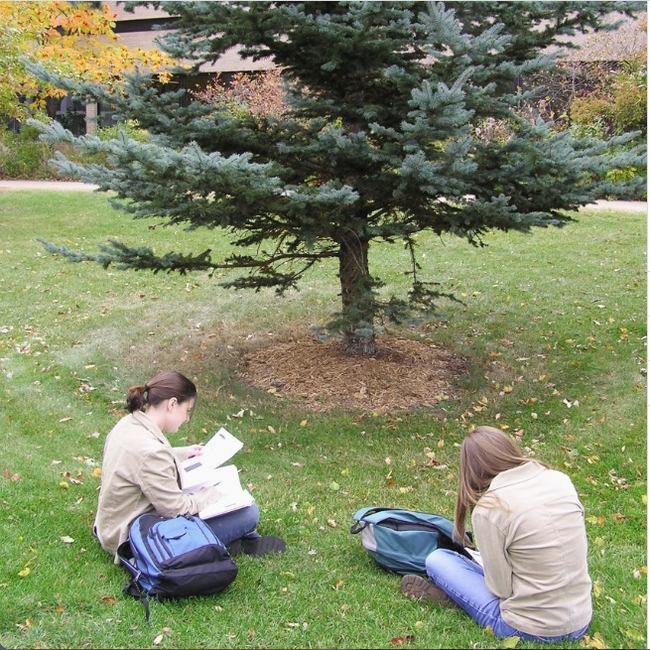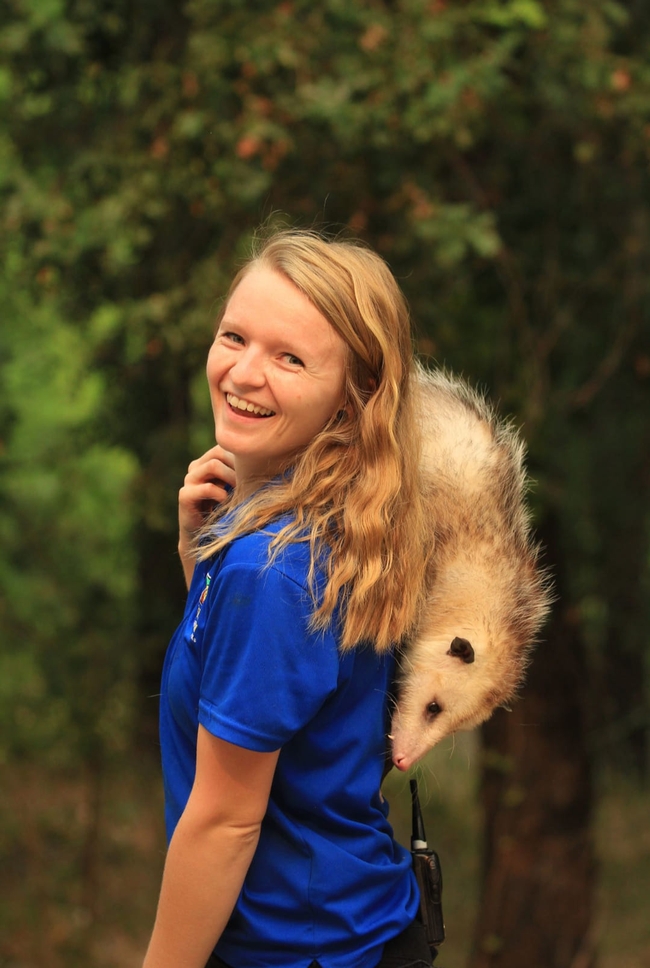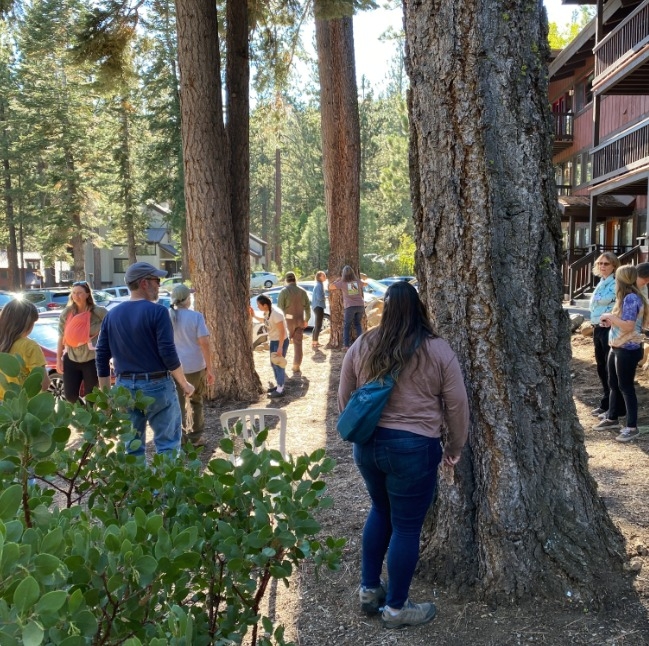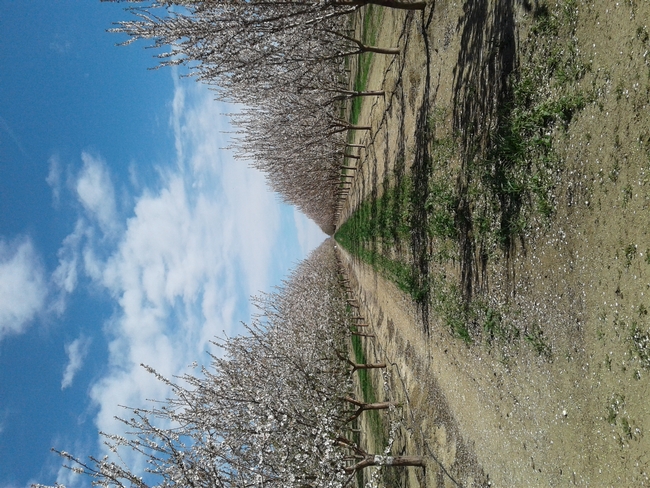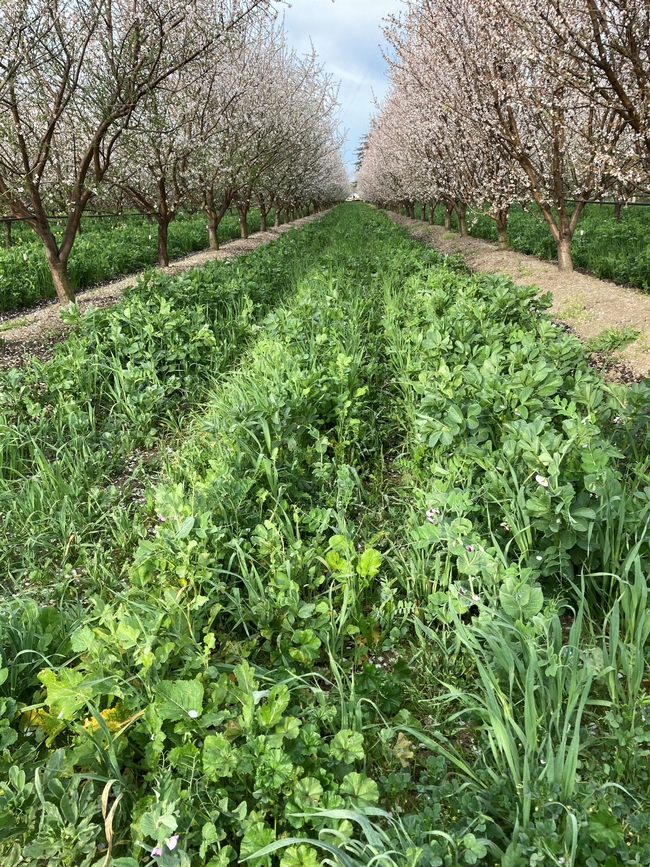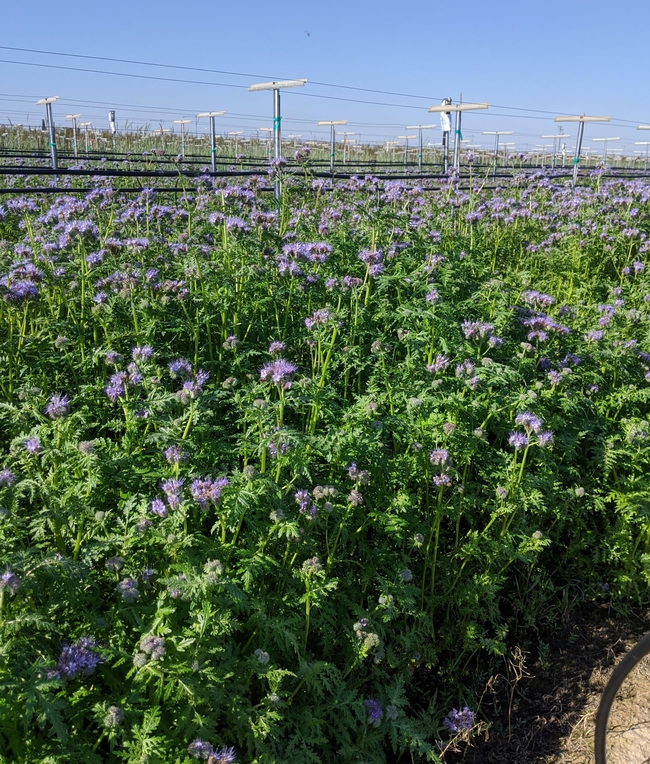Posts Tagged: education
UC awards Brodt $2M to advance soil health, climate-smart farming practices
Regional farms will demonstrate practices such as cover cropping, reduced tillage, compost and mulch use, hedgerow planting, optimized irrigation systems
To accelerate adoption of climate-smart farming practices, the University of California Office of the President has awarded nearly $2 million to a team of UC Cooperative Extension scientists and community partners working on a network of farm demonstration sites. The project will be led by Sonja Brodt, coordinator for agriculture and environment at the UC Sustainable Agriculture Research & Education Program. This UC Agriculture and Natural Resources project is one of 38 funded with $83.1 million allocated to UC by the State of California for climate action research and innovation.
Scaling up soil health and other climate-smart agricultural practices to sequester carbon, increase water and nutrient use efficiency, and improve the resilience of farms to climate-related threats like drought and floods is a core pillar identified in California's Natural and Working Lands Climate Smart Strategy.
Climate-smart agriculture is a systems-based approach that requires localized adaptation across the diverse soils, cropping systems, socioeconomic and cultural contexts throughout California.
“Our project will strengthen the nascent California Farm Demonstration Network for on-the-ground, regionally specific demonstration of a range of climate-smart practices,” said Brodt. “Regional farms will demonstrate practices such as cover cropping, reduced tillage, compost and mulch use, hedgerow planting, irrigation system optimization and more.”
The $1,999,524 project will pilot a participatory partnership extension model that allows farmers to learn from their peers to reduce adoption risks and adapt knowledge to an ever-changing environment, increasing the likelihood of farmer success and accelerating long-term uptake of complex, place-specific practices.
Building on the capacity of local trusted organizations, project collaborators will be organized in a hub-and-spoke network with three regional Farm Demonstration Hubs (Sacramento Valley, North Coast and Central Coast), a pilot Hmong/Mien Demonstration Hub, and a statewide Organic Demonstration Hub.
Collaborators at each hub will be responsible for identifying and nurturing farm demonstration sites, and conducting demonstration trials and farmer-to-farmer outreach activities. Centralized organization and capacity building will be provided by UC SAREP, UC Organic Agriculture Institute, the California Association of Resource Conservation Districts, the Community Alliance with Family Farmers, and the California Farm Demonstration Network Advisory Panel.
In addition to several UC Cooperative Extension advisors and specialists across the state, partners include the UC Hansen Research and Extension Center and the Rodale Institute California Organic Center, both in Ventura County, and the UC Climate Smart Agriculture Program. Eight Resource Conservation Districts will also be involved in leading Farm Demonstration Hubs.
The project will also conduct soil health assessment activities to inform soil health and resilience monitoring protocols in future research and extension efforts. Since many existing soil health metrics were designed for agroecosystems in the Midwest and Eastern U.S., this project aims to lay the groundwork for research to adapt soil health metrics to the arid and Mediterranean climates of California.
“By utilizing relationships built between demonstration hub managers and demonstration farms across different cropping systems, we will gather quantitative and qualitative soil health data, information about growers' management practices as well as their own perspectives of what they really need to know about their soils in order to better manage for climate resilience and mitigation,” said Brodt.
Ultimately, the project partners aim to establish an enduring on-farm extension and research system that will help thousands of farmers adopt climate-smart practices tailored to their farms.
Other grant-supported projects focus on water access, conservation
The largest of the Climate Action Matching Grants, an $8.2 million investment, supports the development of planning tools to advance sustainable, inclusive and equitable water distribution for California's 39 million people. The project is led by Ted Grantham, a UC Cooperative Extension specialist in the Department of Environmental Science, Policy and Management at UC Berkeley. Kristin Dobbin, UC Cooperative Extension specialist in the Department of Environmental Science, Policy, and Management at UC Berkeley, and Erik Porse, director of the California Institute for Water Resources are collaborating on the project.
Three other projects involving UC ANR researchers received California Climate Action Seed Grants and Matching Grants subawards:
- Development of a hydrogel that can work as a soil amendment to help small-scale vegetable farms conserve water led by UC San Diego associate professor Shengqiang Cai with Ruth Dahlquist-Willard, UC Cooperative Extension small farms advisor and interim director of UC SAREP; Mallika Nocco, UC Cooperative Extension specialist; and Matthew Gilbert, UC Davis professor of whole plant physiology. $297,979
- Development of a tool for predicting climate-water variation led by UC Irvine professor Isabella Velicogna with Tapan Pathak, UC Cooperative Extension specialist. $199,531
- A study of urban stream corridors led by UC Davis professor Gregory Pasternack with Igor Lacan, UC Cooperative Extension environmental horticulture and urban forestry advisor. $33,824
- A study of how California's housing crisis affects the growth of the wildland urban interface (WUI), where the fringes of development reach into natural areas led by UC Santa Cruz professor Miriam Greenberg, with Barb Satink Wolfson, UCCE fire advisor, Devii Rao, UCCE livestock and natural resources advisor, and the Central Coast Prescribed Burn Association.
Updated 8/31/23 to add the wildland urban interface study.
Top 10 tools for new forest landowners
Earth Day 2023 celebrates the ways in which we can all invest in our planet, and forest landowners play a considerable role in this. Part of being a forest landowner is deciding where and when to invest your time, money and energy. To assist them, the UC Cooperative Extension Forest Research and Outreach team collaborated with four experienced landowners to highlight 10 tools a first-time forest landowner can invest in.
Listed below, these 10 tools expand past saws and rakes to include tools that educate landowners and support their management activities. We hope this compilation gives readers new to forest management a proper start.
1. Management Goals: Every tool a new forest landowner buys should help advance a management goal. Each of the four interviewees emphasized that understanding what you and your land need is the number-one priority to be investing time and effort into.
“That's my management goal: a healthy forest with as much biology as I can support. Keeping the big trees, letting fire in every once in a while…and correcting the problems we've caused in the past. The species we have here now, it's mostly white fir. People took out the Douglas Fir, the Sugar Pine and you have to do enough thinning to replant those species because they're not coming in that fast underneath the dense fir forest.”
-Brent, Nevada County
2. Pruning and Cross-cut saws: When completing thinning or clearing projects, every forest landowner has their go-to saws. Cross-cut saws are used for cutting down trees, whereas pruning saws cut away dead or diseased branches. Don't forget to look outside of the box for your tools, as one landowner told us about her preference for Japanese tools.
“My Japanese pruning saw… it cuts like butter! It can easily take down trees up to four inches in diameter. The Japanese-made tools, they're smoother and sharper.”
-Danica, Sonoma County
3. A McLeod was cited by each of the four landowners as a must-have tool in every forest landowner's tool kit. One side can be used as a hoe and the other side as a rake, making it useful for activities ranging from trail building to raking in brush for a pile burn.
“For pitching stuff in and raking things out [of a pile burn], you're going to need a McLeod. And if you want to clear a brush pile, it's heavy. And it [the McLeod] works really well for that.”
-Brent, Nevada County
4. Succession or legacy plan: Thinking about who will take care of your land after you is a key aspect of successful forest management. However, bequeathing land to a family member isn't the only option. You could also consider donating your land to a local tribe or to group like the Nature Conservancy.
“[Regarding legacy] On the forest that we manage, we have a conservation easement so it can't be developed. But it doesn't stop it from being logged…How do you conserve? How do you decide? You can let an organization manage it, but it might be in their interest to thin [the forest]. I'll do what I can - I'll set it up for you [the next generation] and hope that there's a shift in the future and we'll learn to steward our resources.”
-Brent, Nevada County
5. Weed Wrench: What to do when you encounter an unwanted plant? When restoring native plants and clearing unwanted invasives, some species are more difficult to uproot than others. If your garden shears aren't cutting it, reach for a weed wrench like the one here.
“I have a lot of bay laurel and there's a lot of saplings that come up and they resprout vigorously. You have to literally pull it out by the root…so I use a weed wrench, and that's been a really valuable tool for me. It's also good for Scotch Broom, anything that has a small diameter neck that you can clamp on to and leverage out.”
-Sacha, Humboldt County
6. Newsletters: Sometimes reading about what other landowners are doing can help you find inspiration for management activities. The Forestland Steward newsletter, which covers general forest management news and events, would be a good place for a new landowner to begin. Additionally, subscribing to newsletters that cater to your region and management goals is a simple way to find applicable management recommendations.
“I subscribe to a bunch of email newsletters, and those are constantly talking about…like, what upcoming events are going on? What are educational conferences going on? I'm constantly getting research articles, casual writings, webinars…For me, I'm personally interested in good fire, so I subscribe to a lot of resources that are focused on using fire as a land management tool.”
-Sacha, Humboldt County
7. Record keeping: Come tax season, you will thank yourself for investing time in keeping records of your management activities. If you find yourself receiving funding in the form of grants, conservation easements or other programs, having a trusted tax advisor or accountant should be a consideration. A close collaborator with the Forest Stewardship Program, Larry Camp, (Registered Professional Forester, forest landowner and retired IRS agent) notes, “Treating your forestland as a business or investment is an important step forward in efficiently managing your forest and can lead to incentives and deductions that will legally reduce your tax burden.”
8. Land History: For many forest landowners, learning about indigenous history is not only fascinating, but a thoughtful reminder of the original caretakers of California forestland. Investigate your land and delve into Traditional Ecological Knowledge (TEK), which may inspire new projects.
“When we're talking about land and access to land, I think it's always good to be thinking about tribal sovereignty, and what are actions we can do to support that. Historically, this [land] was an oak woodland…we're playing catch up over 150 years of fire suppression policies. I'm working towards oak woodland restoration, and part of that is that tie-in to responsibility to tribal access.”
-Sacha, Humboldt County
9. Management education resources: Though we at UCCE have our own Forest Stewardship Workshop series, there are often informational webinars and videos offered through regional organizations. The California Wildfire and Forest Resilience Task Force website has a list of educational resources for landowners, found here.
“I'm big on education, and when you're participating in that educational group, they [program participants] might throw out a different name, or a different agency you can use. It's really about being involved and taking up the suggestions that people give you.”
-Laura, Nevada County
10. Community: Getting connected with organizations like your local Resource Conservation District (RCD), Natural Resources Conservation Service (NRCS), CAL FIRE, or UC Cooperative Extension (UCCE) office can be a big help to new landowners. These organizations house experts such as Registered Professional Foresters (RPFs) who can provide technical assistance and assist in applying for permits or drafting a management plan. Devote time looking into region-specific organizations such as the Foothill Conservancy and My Sierra Woods that service multiple counties. Peer networks are a plus as well. Community ties were continuously cited by the forest landowners we spoke to as being a valuable resource.
“Try to figure out what organizations are around you that are doing stuff. Around here, there's the Mid-Klamath Watershed Council, and they'll have invasive plant removal days, and you can go and volunteer. Doing something like that, where you're hands-on and connecting with other people is what I'd suggest.”
-Sacha, Humboldt County
“My community…is definitely close knit, because it's tough! It's a lot of work. And, you know, if I'm renting a chipper and it's up at my property and someone else wants to use it, they can. It's very, very helpful to be close with your neighbors and learn from them.”
-Laura, Nevada County
Project Learning Tree: Shaping the future of California forests
On this International Day of Forests, we at UC Cooperative Extension Forest Research and Outreach invite you to celebrate the future of California's trees with us. Considering the recent news coverage regarding tree mortality in California, we want to instead view this subject through a lens of hope. For it's not just the news outlets witnessing the extent of forest die-off: children, especially those in forested communities, are seeing the effects of drought, wildfire, and fire suppression policies in real time.
Project Learning Tree is a national education program leading the next generation to witness and then act on these changes. Children are the future of our forests, and we think the efforts of Project Learning Tree are a cause for celebration, don't you?
Last month, Californians may have noticed a marked uptick in the news coverage of the state's forests. Local, state and national news outlets all reported on the startling approximation of 36 million trees that perished between 2021 and 2022. This number, gleaned from USDA Forest Service data, is a startling jump from the 9.5 million trees that perished the year before. The future of California's forests does not have to look like this, with large fluctuations and ever-rising numbers of dying trees. Right now, it's not easy being a tree. In 10 or 20 years? We're hopeful that the situation is different.
Project Learning Tree (PLT), stretches across the nation to connect students to forests, even if they live miles away from one. Jonelle Mason, the PLT coordinator for Northern California region, provided more insight into the program's purpose through a sentiment many may be familiar with: “To quote Jane Goodall, ‘Only if we understand, will we care. Only if we care, we will help.'” Project Learning Tree is one piece in the future of forest stewardship, and as Jonelle sees it, “Forming forest-education generations creates passionate advocates. People can't save what they don't know about.”
A point touched on by nearly all news outlets covering tree mortality was the centuries of fire suppression practices and its ripple effects that amplify drought and wildfire damage. Students in California are aware of natural disasters affecting forests and forested communities, but not necessarily the causes.Mason posits that in closing that knowledge gap, PLT can “cultivate environmental defenders [who] will ultimately push us in the right direction.”
A crucial aspect of Project Learning Tree is that it exists as a continuing education program, meant to follow students from kindergarten to senior year of high school. Each year of learning builds upon the last, yet the topics are given nuance and depth even at the elementary school level. For instance, PLT's flagship K-8 curriculum gives second grade teachers the tools to communicate ecosystem services, plant structure and natural resource cultivation. High school teachers following the “Focus on Forests” education guide will find avenues to introduce concepts like environmental policy, and will help students understand the difficult decisions that many forest landowners face.
It does indeed give us a reason to celebrate the future. Young people are more active in the conversations surrounding the environment and climate change, and are aware that something must be done to protect the natural resources they have left. It's vital to translate that passion and interest into true learning, where a classroom can become the space for developing ideas for what can be done about our state's forests. Mason is quick to point out the core tenant of PLT that makes it unique: “Teaching students how to think, not what to think, about environmental concerns.”
Project Learning Tree presents concepts to students and gives them the tools to think critically through the many fields that touch forests, from the natural sciences to philosophy. California's youth has a vested interest in protecting and managing their forests, and programs like PLT give us hope that the interest can truly be translated to action.
If you are interested in bringing Project Learning Tree to your school or home, you can contact Mason at jmason@ucanr.edu.
Can California native plants be used as cover crops to benefit farmers and native ecosystems?
In late February, in an almond orchard in the Sacramento Valley, the fall-planted cover crop mix of grasses, brassicas and legumes had barely produced a green fuzz above the soil surface, and it was unclear when it would bloom. Unfortunately, this scene is becoming more frequent across California, as climate change causes more prolonged droughts and rain-dependent winter cover crops can barely grow, which delays or reduces bloom, essential for supporting pollinators. Fortunately, California native plant species have evolved with drought and have developed many strategies to survive and reproduce in those conditions.
Would it be possible to capitalize on the over 9 million acres of cropland in California for drought resilience and habitat restoration by utilizing more native species as cover crops? Our team at the UC Sustainable Agriculture Research and Education Program (UC SAREP) spent some time considering various native plant species and their potential ecological and operational attributes as cover crops. For a full list of species and their attributes, see https://ucanr.edu/sites/covercrops/.
Many native species are so well adapted to drought that they will still germinate and bloom during extremely dry years, for example, annuals like Tidy Tips (Layia platyglossa) and California poppy (Eschscholzia californica). Alternatively, perennial bulb species like Prettyface (Triteleia ixioides) and Bluedicks (Dipteronstemon capitatus) become dormant during the dry summer, retaining their bulbs below ground and re-growing when the rains return. These species could perhaps fit well in no-till orchard systems. Summer dormancy is important for tree nut growers because they usually need clean ground under the trees during harvest. Moreover, the costs to terminate and reseed would potentially be eliminated. While these species are well-known by Native Americans for their edible bulbs, at this point in time, we are not aware of any cover cropping trials having ever been conducted with these species.
Another species with strong reseeding and more availability is the annual Lacy Phacelia (Phacelia tanacetifolia), which offers an intriguing historical precedent for developing a native species for cover cropping purposes. Native to California, it was introduced into Europe in 1832 by Germans. It is very attractive to pollinators and experienced a boom there in the early 1990s. European beekeepers and farmers have been using Lacy Phacelia as a cover crop ever since, and it has recently been gaining traction on California farms as well. California has many species of phacelia, with another, described as being even more attractive to native bees, being the annual Great Valley Phacelia (Phacelia ciliata). Besides supporting native bees, other native plant species can contribute nitrogen to the soil, such as annual Lupine (Lupinus spp.) and perennial Deerweed (Acmispon glaber), which are legumes and form an association with nitrogen-fixing bacteria in their roots.
Cover crops are not usually considered marketable crops. However, we should not preclude the potential for some plants that are useful as cover crops to provide a harvestable product as well. Native perennial fiber plants such as Indian hemp dogbane (Apocynum cannabinum), narrow leaf milkweed (Asclepsias fascicularis), and common nettle (Urtica dioica) could offer the opportunity to cultivate summer cover crops that have a market value, especially in cases where farmers are already willing to irrigate their cover crops to improve their development and amplify the benefits. Bowles Farming in the San Joaquin Valley is experimenting with growing these three species for fiber production. All three also attract native bees and important butterfly species such as monarchs (as long as farmers avoid spraying insecticides).
While we believe that some native species could open new opportunities for farmers as cover crops, we still have insufficient studies testing the effects and viability of these species. Organizations like the NRCS Plant Materials Center at Lockeford and the Xerces Society are conducting practical studies with native species, creating plant guides and working with farmers to expand their use. In addition, researchers Lauren Hale of the USDA Agricultural Research Service and Anil Shrestha of California State University, Fresno, are using a 2021 UC SAREP small grant to study the effects of native species mixes on water demand and weed populations in San Joaquin Valley grape vineyards. Hale suggests that below-ground ecosystems may benefit as much from native plants as above-ground ecosystems. Says Hale, “Because plants and their microbiomes have evolved together for millennia, it seems logical that native plants would promote a good response from the native soil microbiota.”
For additional information:
UC SAREP List of California Native Species for Potential Use as Cover Crops: https://ucanr.edu/sites/covercrops/
Xerces Society lists of pollinator-friendly native species for California: https://xerces.org/pollinator-resource-center/california
NRCS California Plant Materials Center plant guides: https://www.nrcs.usda.gov/wps/portal/nrcs/publications/plantmaterials/pmc/west/capmc/pub/
UC SAREP Cover Crops Database: https://sarep.ucdavis.edu/covercrop
2021 Kearney Alfalfa and Forage Field Day to be held In Person 9/23/21
REGISTER NOW NOTE: DUE TO COVID, PRE-REGISTRATION IS REQUIRED TO ATTEND NO COST TO ATTEND Pre-register by clicking or following the link...
Alfalfa and Forage Field Day 2021 Agenda


